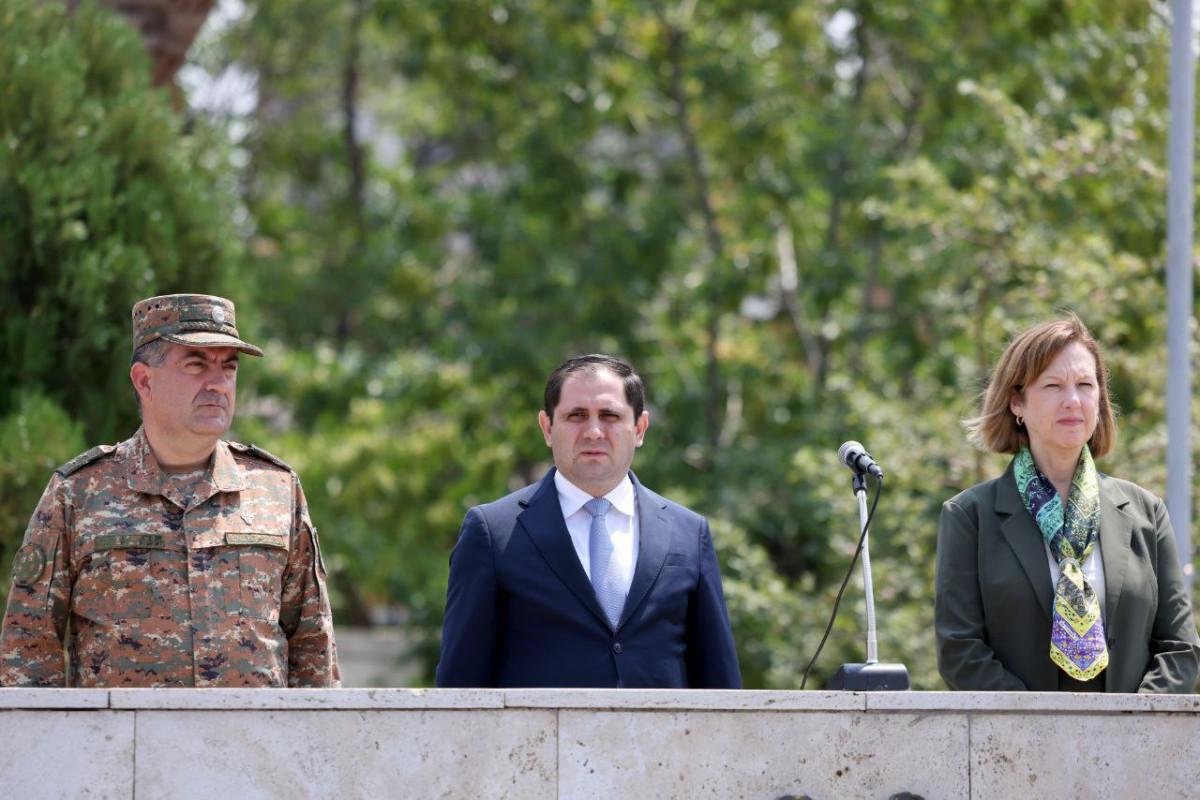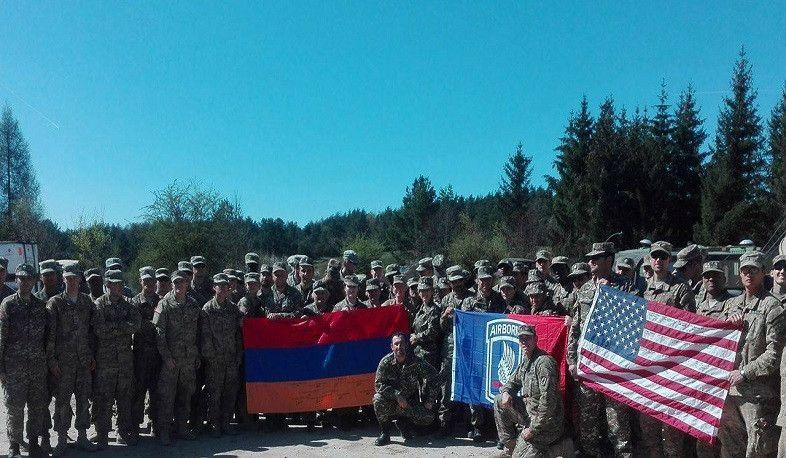Armenia further shifts towards West as Russian control over key airport ends Early impact of shift in airport control unveiled
Armenia's recent decision to take control of Zvartnots Airport from Russian border guards marks a significant shift in the country's geopolitical alignment. This move, seen by many as a clear signal of Yerevan's increasing distance from Moscow, has sparked widespread speculation about the motivations behind it. Observers suggest that Western pressure, particularly from the United States, played a crucial role in prompting Armenia to assert control over its main air gateway, allowing it to discreetly manage incoming cargoes. The implications of this decision extend beyond mere airport management, hinting at deeper geopolitical manoeuvres involving growing military cooperation and security arrangements in the volatile South Caucasus region.
The West's growing military presence in Armenia
The situation in Armenia has become even more complex with reports of increased US military involvement in the country. As Caliber.Az already reported, two US military transport planes, Boeing C-17s, recently landed at Zvartnots Airport, carrying military cargo and personnel. These flights, tracked by the global flight service Flight Radar, have raised eyebrows, particularly as they coincide with Armenia's efforts to reduce Russian influence.
The report elaborates that these planes delivered a significant shipment of US-made weapons to the Armenian armed forces, including sniper rifles, night vision devices, special communication equipment, body armor for special forces, strike mini-drones, compact mines, and other advanced munitions. This delivery is reportedly part of a classified military cooperation agreement signed between Armenia and the US in Brussels on April 5, 2024. The agreement, it seems, is not merely symbolic but includes tangible military support aimed at bolstering Armenia's defense capabilities.

Furthermore, the report reveals that the US has also provided training to Armenian special forces on the use of this new equipment. Following this training, Armenian forces initiated a military provocation against Azerbaijani units in Kalbajar District to test the newly acquired weapons in real combat conditions. This escalation underscores the potential risks of increased militarization in the region and raises questions about the broader objectives of the US and its allies in Armenia.
Strategic deployments & geopolitical tensions
In addition to weapon deliveries, the US appears to be enhancing its strategic capabilities in Armenia by deploying specialized equipment designed to track missile trajectories and other airborne objects. This equipment, reportedly aimed at monitoring potential threats from Iran, is being installed along Armenia's border with Iran. However, the US has not entrusted this sensitive task to Armenian military personnel. Instead, they have deployed a contingent of 30-50 individuals, carefully selected to avoid drawing attention from Russia and Iran.
The personnel, many of whom are US citizens of Armenian descent or individuals of Slavic and Caucasian appearance who have emigrated from former Soviet states, are disguised in Armenian military uniforms. They are stationed at the Armenian military base in Zangazur, a strategic location that underscores the US's intent to maintain a foothold in the region without overtly provoking Russia or Iran.

The presence of these US operatives, along with the advanced equipment they are operating, is a clear indication of Washington's interest in Armenia as a strategic ally in the South Caucasus. This move is likely part of a broader effort to counter Russian influence in the region and to ensure that Armenia remains aligned with Western interests, despite its historical ties to Moscow.
Western influence vs. Russian control
Armenia's decision to remove Russian border guards from Zvartnots Airport is not an isolated event but part of a broader pattern of distancing itself from Moscow. The Pashinyan government has increasingly signaled its intent to reduce Armenia's reliance on Russia, both militarily and politically. This trend is evident in Armenia's decreasing participation in the Collective Security Treaty Organization (CSTO), a military alliance dominated by Russia.
Armenia has largely stopped participating in CSTO activities, with Pashinyan's government withdrawing from the organization's financing process and boycotting its military exercises. This distancing has not gone unnoticed in Moscow, where the Kremlin is likely monitoring these developments with concern. However, Russia's response has been relatively muted, suggesting that Moscow may be recalibrating its approach to Armenia in light of these changes.

The Western influence in Armenia is not limited to military cooperation. There are also concerns about the expansion of US-backed biological laboratories in the country. Leaked information from Armenian sources suggests that the recent military cargo deliveries from the US and other Western nations may include supplies for these laboratories. The presence of such facilities, which are rumored to be involved in the development of new biological weapons, has raised alarms about the potential risks to the entire South Caucasus region.
Armenia's dilemma: Stuck between East & West
The Pashinyan government's maneuvers reflect the difficult position Armenia finds itself in - caught between the influence of the West and the longstanding ties with Russia. On one hand, Armenia seeks to strengthen its ties with the US and the European Union, hoping to secure economic and military support. On the other hand, Yerevan is acutely aware of the risks of severing ties with Russia, particularly in terms of national security.
Despite the overtures to the West, Pashinyan has not fully committed to breaking away from Russia. Armenia's continued, albeit reduced, membership in the CSTO suggests that Yerevan is hedging its bets, trying to maintain a relationship with Moscow while gradually aligning more closely with the West. This strategy is fraught with risks, as it could provoke a stronger reaction from Russia, which might see Armenia's actions as a betrayal.
At the same time, the Pashinyan government is wary of fully embracing the West without clear security guarantees. The US and EU's reluctance to provide concrete assurances for Armenia's security leaves Yerevan in a precarious position. Pashinyan is likely aware that any abrupt move away from Russia could leave Armenia vulnerable, especially given the ongoing tensions with Azerbaijan.
The broader implications for the South Caucasus
The developments in Armenia are part of a larger struggle for influence in the South Caucasus, a region that has long been a battleground for competing powers. The West's increasing involvement in Armenia, coupled with Russia's efforts to maintain its influence, could lead to greater instability in the region. The possibility of Armenia becoming a proxy battleground between the US and Russia is a real concern, especially if the current trends continue.
The removal of Russian border guards from Zvartnots Airport is a symbolic victory for the West, but it also signals a potential escalation in the geopolitical rivalry in the South Caucasus. As Armenia continues to navigate this complex landscape, the risk of miscalculation remains high. The presence of US military personnel and equipment in Armenia, particularly near the border with Iran, could further strain relations with Moscow and Tehran, both of whom view the South Caucasus as a critical area of interest.
In conclusion, Armenia's shift away from Russian control and towards greater cooperation with the West is a significant development that could reshape the geopolitical landscape of the South Caucasus. However, this shift is fraught with risks, and the Pashinyan government must tread carefully to avoid provoking a backlash from Moscow while still securing the support it seeks from the West. As the situation evolves, the potential for increased tension and conflict in the region cannot be ruled out, making it a critical area to watch in the coming months.








